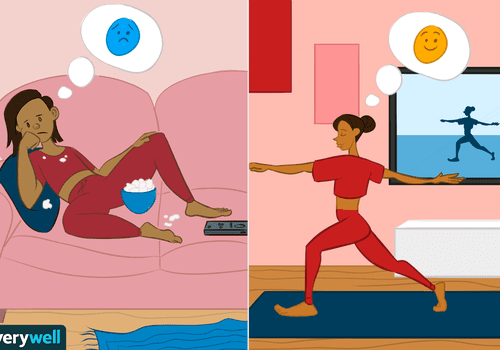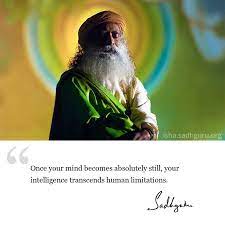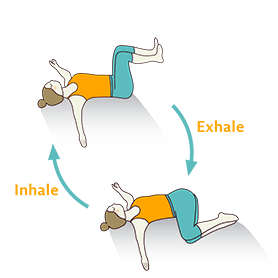
Kundalini Yoga is a wonderful way to increase awareness and clear your mind. It helps you deal with stressful situations positively. The practice is based in the belief that your mind is a powerful tool. A positive outlook is a key principle.
Meditation
Kundalini yoga beginners should practice meditation, but it can be difficult to incorporate meditation into their daily lives. Meditation takes practice, but even a couple of minutes daily can make a difference. When done correctly, a meditation practice can control emotions and behaviors.
Asanas
One of the most basic exercises in Kundalini yoga is called Sat Kriya. This simple breathing exercise can be done for 3 minutes each day. The pose requires that you sit straight up while keeping your legs crossed. Your arms should be stretched over your head, and interlaced with your fingers except your index fingers. Begin to inhale by looking toward your inner third, which is located at your brow tip. Exhale and expand your belly. When you exhale, repeat the chanting of "Sam" or "Sat."

Chanting
Chanting is an important tool in kundalini Yoga. Chants help awaken the senses to discover your divine nature. Chants are a great way to relax and reduce stress.
Breathing
Kundalini Yoga, for beginners, can be very difficult because it requires a lot more effort. Kundalini Yoga requires you to take a slow, deep breath. This is in contrast to traditional yoga breathing techniques. The benefits of this practice range from being more mindful and peaceful, to helping a person achieve higher energy levels.
Visions
Kundalini yoga originated from the Upanishads, sacred Vedic writings that speak of the spiritual nature of reality. These ancient texts were composed between 1,000 and 500 B.C. these texts were passed from masters through meditation visions from students to them. These texts are believed to have inspired many spiritual practices and movements in history, including Buddhism.
Stress relief
Kundalini Yoga is a great method to reduce stress. This type of yoga uses a series kriya and breathing exercises to help connect the mind and body. It promotes relaxation and reduces tension. Beginners can learn how to perform these exercises by following the instructions of a certified instructor, such as Mari.

Reduces anxiety
Kundalini Yoga is a form that isn't as well-known than other types of yoga. It is an ancient form that has been practiced for several centuries. YogiBhajan first introduced it in North America back in 1969. This technique combines movement with breathing techniques to help the body regain its balance. Kriyas that are specifically designed to aid individuals with anxiety can be found in the Kriyas.
FAQ
What kind of music can you hear in a yoga room?
Many yoga studios play soft instrumental music during class. This is done to encourage learning and create a calm atmosphere.
Some studios prefer more upbeat music such a hip-hop or jazz.
Be mindful of what music and audio you listen. Sometimes music can distract us from our practice.
Who would be most benefit from yoga?
People who are looking to improve their quality of life and increase their fitness level are the target market for yoga. People who wish to improve balance, flexibility, posture, and overall health.
They might also be looking to gain or lose weight. They might also be interested reducing stress and anxiety to achieve peace of head.
Asthma, diabetes, arthritis, back problems and asthma are all possible disabilities. Yoga is especially beneficial for these individuals.
Do I have to be flexible to do yoga?
It depends on the kind of yoga that you are doing. Some yoga styles require you to be very flexible, while others focus on building muscle strength.
Different types of yoga call for different levels and degrees of flexibility. For example, beginners might just need to raise their arms above the head. Intermediate practitioners will need to bend forward and touch the toes. Advanced practitioners might be required to perform deep twists, bends.
What foods should I avoid after practicing yoga?
Your energy levels may be affected by avoiding certain foods. You may feel bloated and have stomach cramps. If you feel tired after practice, you may want to eat something light and nourishing.
What are the differences between Hatha and Ashtanga, Vinyasa Power Yoga, Power Yogas, Kripalu, Bikram, Power Yogas, Vinyasa and Power Yogas? ?
There are many different types of yoga. Each style offers its own way of finding balance in our lives.
Some of the most sought-after forms of yoga are:
Hatha is an exercise that involves stretching and poses with a focus on core strength, flexibility, and balance.
Ashtanga: This practice focuses on slow-paced movements to build strength and stamina.
Vinyasa Yoga - This type allows you deepen your breathing by incorporating fast-flowing sequences.
Power - A form of power yoga that includes more challenging moves.
Kripla – One of the oldest forms if yoga that dates back thousands upon thousands of years.
Bikram-This type of yoga can only be done in heated areas.
How much yoga do you think is excessive?
It's important to remember that yoga is not a sport. There is no limit to how many times you can do before you get tired. Instead, focus on enjoying the experience and taking things slowly.
It's okay to fall off the wagon every now and again. Keep going where you are at the moment.
You can start by doing 10 to 15 minute sessions, then build up to more advanced classes.
How long does a pro yoga teacher take?
It depends on the style of yoga you are practicing. Different styles are quicker than others. You can expect to improve even if your skills are still developing.
The more you practice, the better you'll become. You'll see improvements in just a few short weeks of practice.
Statistics
- Gentle yoga has been shown to ease some of the discomforts of tender, swollen joints for people with arthritis, according to a Johns Hopkins review of 11 recent studies. (hopkinsmedicine.org)
- According to calorie estimates calculated at Harvard Medical School, the average 125-pound person burns about 120 calories in a half hour of hatha yoga, and a 185-pound person burns about 178 calories in that half hour. (everydayhealth.com)
- A 2020 review of 27 studies (1,805 total participants) of yoga interventions in children or adolescents found reductions in anxiety or depression in 70 percent of the studies, with more promising results for anxiety. (nccih.nih.gov)
- The people in the yoga group were 37 percent more likely to have quit smoking by the end of the 8-week program. (nccih.nih.gov)
- The American Psychological Association recently shared that 84% of American adults feel the impact of prolonged stress (5). (healthline.com)
External Links
How To
Yoga is a good exercise?
Yoga is not just for people looking to lose weight. Yoga can help you improve flexibility, balance and coordination as well as strength, focus, calmness, and coordination.
Yoga isn't just exercise, but an art form. They are used to relax and meditate. They improve posture, concentration, and respiration.
A "yogi" is someone who practices yoga. Yogis follow various forms of yoga, including Hatha, Ashtanga, Iyengar, Vinyasa, Bikram, Kundalini, Yin Yang, and Restorative.
There are many types and styles of yoga. But they all share similar goals. Each type focuses on different aspects of health and wellness. Yoga styles include Hatha, pranayama (meditation), and pranayama (pranayama).
There are some yoga movements that don't require equipment.
-
Sun Salutation – This sequence of 12 poses begins with a forward bend and is followed by 10 more.
-
Warrior Pose: While holding a stick, or staff, you can do a warrior pose.
-
Triangle Pose – To achieve this pose, you need to raise one leg and then bend at the knee.
-
Standing Forward Bend- This is when you lie down straight on the ground, with your legs straight. Then, fold forward to the waist.
-
Seated Twist – This pose can be performed while seated on either a chair or a mat.
-
Cobra Pose: This position is done lying on your back, arms raised.
-
Child's posing - This position is performed while facing up on the ground.
-
Cat/Cow Pose (Cat/Cow Pose) - This combination is similar to a cow or cat pose. As you lie face down, lift your upper body off of the ground. Then roll over onto your side and place your hands under your shoulders.
-
Head Tilt--This pose requires that you tilt your head back with your eyes closed.
-
Shoulder Stand – This position is where you stand upright while your arms are raised above and feet are raised above the neck.
-
Tree Pose – This pose involves kneeling on your heels with your hands beneath your shoulders.
-
Bow Pose – This is when you bend forward from your hips and place your hands on the ground.
-
The corpse pose is held for five to ten minutes.
-
Mountain Pose – This is a pose known as mountain pose. Your spine should be straightened and you must stand tall.
-
Legs Up the Wall Pose- This pose can be achieved by hanging upside-down at a wall.
-
Side Angle Pose -- This pose requires you to lean against a wall and place your right arm in front of the wall.
-
Plank Position – This is when you lay flat on your stomach, extend your left arm out and place your right foot in front of each other.
-
Bridge Pose- Balance on your elbows and toes for this pose.
-
Reverse Table Top - This position is achieved by lying on the stomach and reaching your arms towards your ceiling.
-
Handstand - This requires strength and balance. Hold yourself in between two walls or use a door frame to do this pose.
-
Half Moon Pose is also known by the name Hero Pose. You can perform it by standing on your hands or toes.
-
Headstand (or Handstand) - This pose requires excellent balance and strength. This pose is possible on a brick wall or on a doorframe.
-
Forearm Balance: This pose requires that your forearms rest on the tabletop.
-
Spinal Twist- This pose involves lying on your belly and reaching your arms.
-
Supported Bound Angle Pose - This pose requires support and balance. To support your body, you will need to locate a strong object such as a tree branch or an old beam.
-
Wide Leg Forward - This position involves extending your legs and touching your toes.
-
Single Pigeon Pose: This is a variation of the forward-folding wide-leg position, but with only one leg.
-
Extended Puppy Dog Poses-This pose is extremely relaxing. This can be done by stretching your legs straight out and bending at the knees.
-
Seated Forward Bend - This pose is sitting cross-legged and stretching your hamstrings and calves.
-
Crow Pose is a difficult pose that can be very rewarding once you have mastered it. The trick is to raise your arms higher than your head and lower them so that they touch the ground.